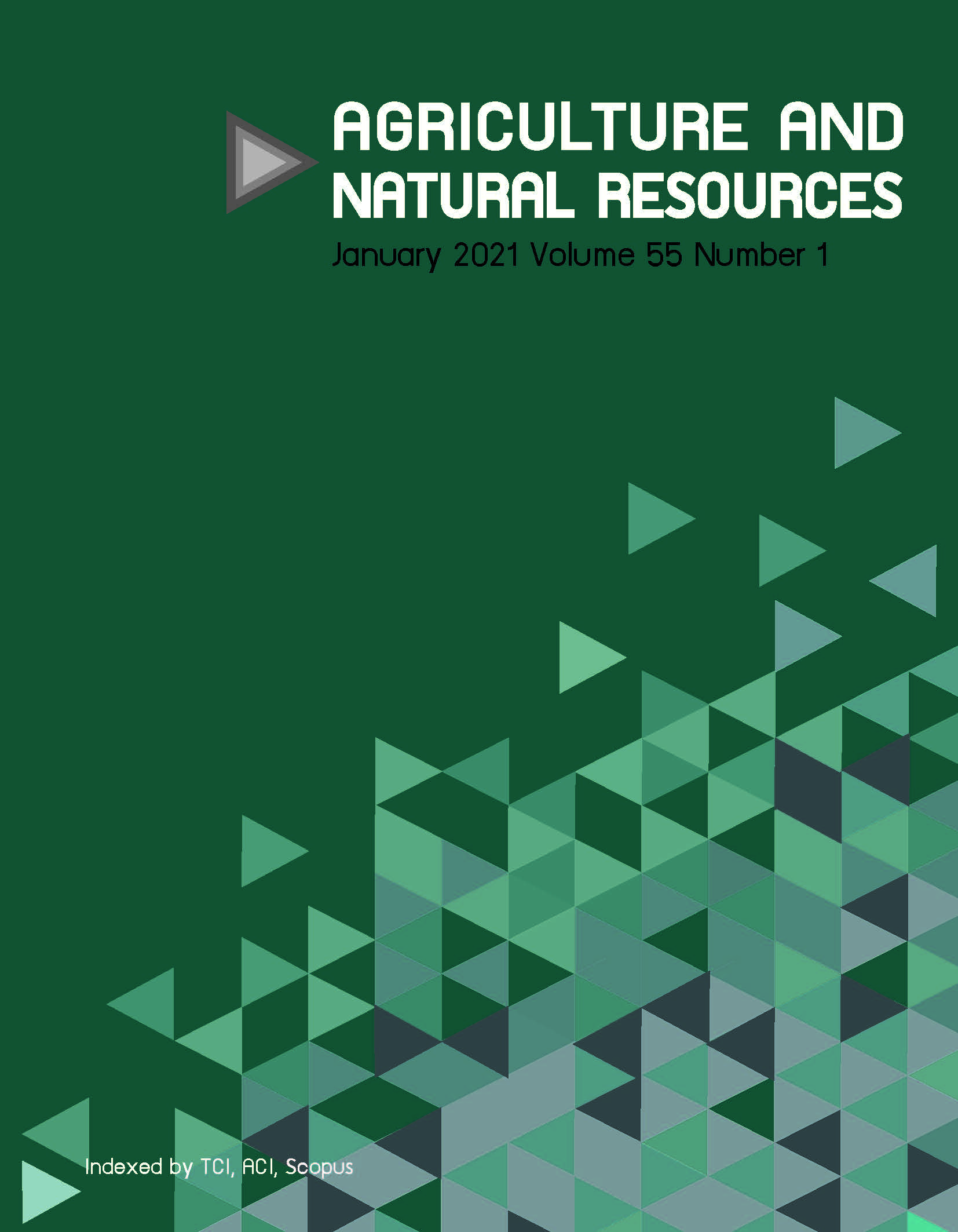Isolation of stigmasterol from Kra Don (Careya arborea Roxb.) and bioactivities of its crude extracts against free radicals and human immunodeficiency virus
Keywords:
Antioxidant, Anti-human immunodeficiency virus (HIV), Careya arborea, StigmasterolAbstract
Careya arborea Roxb. (family Lecythidaceae) has long been used as a medicinal plant for the treatment of many diseases. In this study, extracts were taken from the stem bark, wood and leaves using methanol and then investigated for antioxidant activities, such as 2,2-diphenyl-1-picrylhydrazyl free radical scavenging activity, nitric oxide radical scavenging activity (NO), superoxide radical scavenging activity (SOD), ferric reducing antioxidant power (FRAP), total phenolic content (TPC) and total flavonoid content (TFC). For the antioxidant activities, the stem bark extract had the highest mean (±SD) levels (623.96 ± 12.50 μg/mL, 140.86 ± 2.63 μg/mL, 152.38 ± 6.35 μg/mL, 252.44 ± 4.87 mg Trolox equivalent/g and 128.19 ± 2.12 mg gallic acid equivalent/g, respectively) except for the total flavonoid content, for which the leaf extract produced the highest amount (30.62 ± 0.29 mg quercetin equivalent/g). However, regarding the anti-human immunodeficiency virus (HIV) activity using an HIV-1 reverse transcriptase inhibition assay, the stem bark and leaf extracts had a high inhibitory effect against HIV-1 reverse transcriptase with values of more than 100% of the relative inhibition for a comparable level of the standard drug (Nevirapine). The highest ranking of the antioxidant and anti-HIV activities of the fractions was the stem bark followed by the leaf and wood extracts, respectively. Stigmasterol was isolated from combined fraction number 3 of the lipophilic extract eluted from n-hexane-ethyl acetate (95:5) via column chromatography. The 1H and 13C NMR data obtained were in accordance with previous reports. Future study will investigate further isolation of these bioactive compounds and evaluation of their bioactivities.
Downloads
Published
How to Cite
Issue
Section
License

This work is licensed under a Creative Commons Attribution-NonCommercial-NoDerivatives 4.0 International License.
online 2452-316X print 2468-1458/Copyright © 2022. This is an open access article under the CC BY-NC-ND license (http://creativecommons.org/licenses/by-nc-nd/4.0/),
production and hosting by Kasetsart University of Research and Development Institute on behalf of Kasetsart University.







